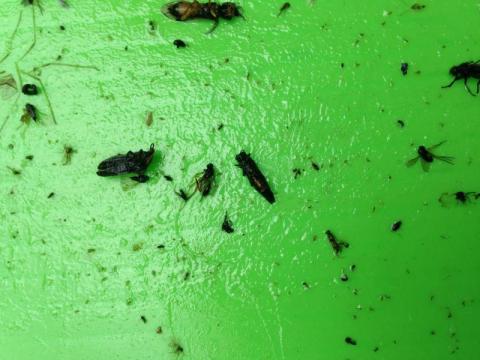
Insects stuck to a green trap. Note the emerald ash borer in the middle of the picture.
Detection, Control and Protection Methods used by the State of New Hampshire
The state of New Hampshire has a multi-pronged approach to detecting and controlling the spread of emerald ash borer (EAB). You may have seen evidence of some of these methods, while others are less visible. We are always researching and trying new methods.
Detection Methods
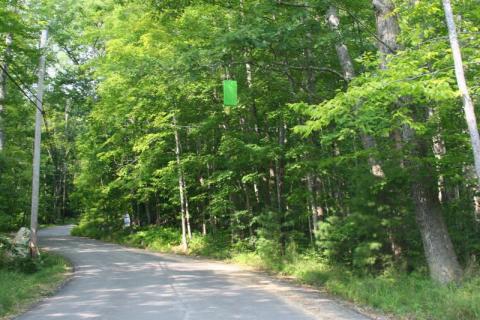
A green trap hung from an ash tree along a New Hampshire road.
Purple and Green Traps
These traps are hung from ash trees. They have chemical lures on them that attract beetles and a sticky material that causes insects to stick to them. These traps are used as a method to detect emerald ash borer populations that are already in an area; they don’t attract them to an area that isn’t already infested.
The traps are placed based on scientific protocols aimed at intercepting EAB if they are in an area. Purple traps have been used in past years, and the N.H. Division of Forests and Lands is now trying green traps as an alternative.
Visual Surveys
Experienced entomologists, foresters and volunteers look for signs and symptoms in high-risk communities. Citizens are encouraged to report suspect ash trees and insects.
Trap Trees
Trap trees exploit the fact that EAB are attracted to ash with a mechanical injury. A trap tree is a low-value ash that is girdled to attract EAB. Trap trees are used by the N.H. Division of Forests & Lands to monitor the spread of EAB.
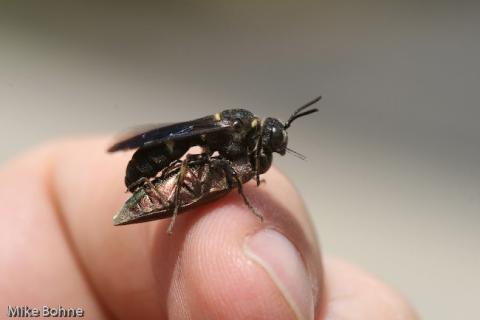
Cerceris fumipennis carrying a Dicerca sp. beetle. Photo credit: Mike Bohne
Cerceris Wasps
EAB can be difficult to detect with visual surveys. Foresters are using biosurveillance techniques in an effort to find new populations of emerald ash borer.
Cerceris fumipennis is a native wasp that feeds on buprestid beetles, including emerald ash borer. Cerceris is a ground-nesting wasp that paralyzes prey and brings paralyzed beetles back to the nest for feeding. Some states have WaspWatchers programs, which train people to identify the nests of Cerceris colonies to monitor for the presence of emerald ash borer and other buprestid beetles. If you are interested in participating in New Hampshire, contact the N.H. Division of Forests and Lands Forest Health office at (603) 464-3016.
Find more details about using Cerceris wasps as an emerald ash borer detection tool.
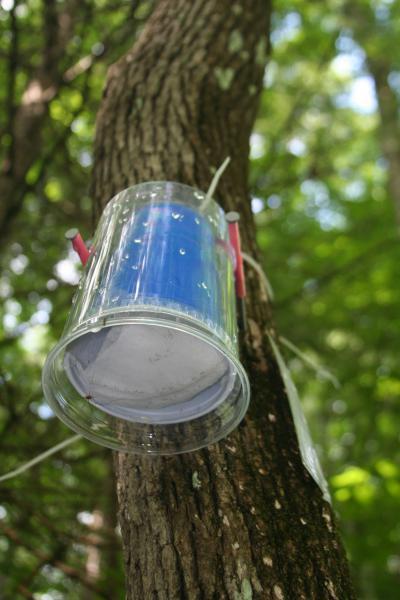
The method used to release parasitic wasps on an EAB-infested ash tree.
Control Methods
Biological Control
Starting in 2014, the N.H. Division of Forests and Lands released parasitic wasps that inject their eggs into the eggs or larvae of EAB and parasitize some of the population. The parasitic wasps are reared by APHIS in a controlled environment and sent to states with EAB populations.
The program in New Hampshire began in 2014 and will continue into the foreseeable future, as EAB establishes itself in the state.
Protection Methods
Insecticide Treatments
The N.H. Division of Forests and Lands works with tree care professionals to apply a variety of insecticides to individual municipal trees. Homeowners who are interested in protecting high-value ash trees can hire a professional to apply insecticides or find insecticides available for purchase by homeowners.
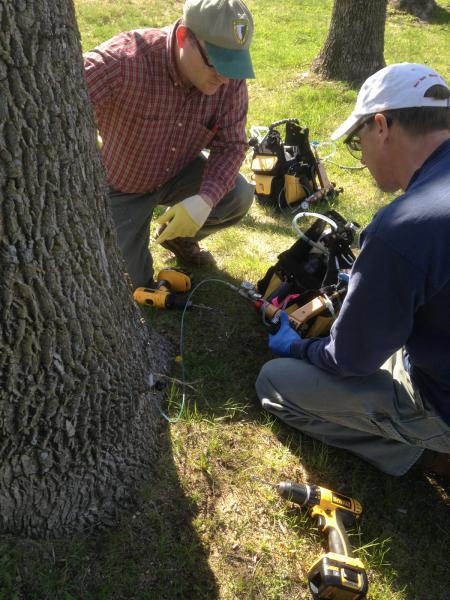
Injecting insecticides to the root system of an ash tree.
Sink Sites
Sink sites are a cluster of low-value ash, girdled within ¼ mile of high-value ash. Sink sites are used by forest landowners to control the spread of EAB by manipulating which trees are infested with EAB.

